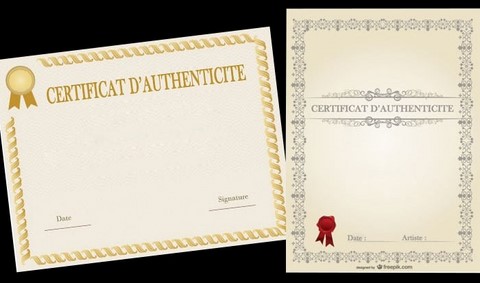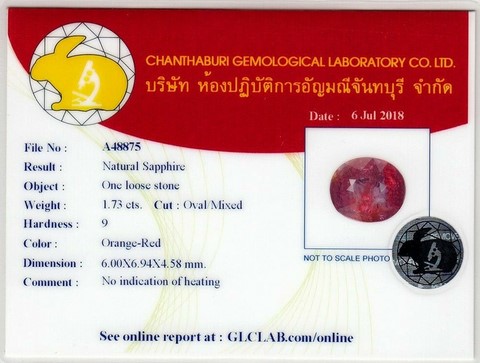 The great certificate of authenticity scam
The great certificate of authenticity scam
What is a certificate of authenticity ?
A certificate of authenticity (in English, sometimes COA) is a document necessary for the attribution of a work to an artist. It can include the title of the work, the date of its creation, the name of the artist and various elements specific to the artistic discipline (medium, dimensions, number of copies produced, materials, photo of the work, etc. ...).

No legal value for minerals and fossils...
By definition, geological objects (minerals, fossils, crystals, etc...) are not works of art, they were created by Nature. A certificate of authenticity therefore has absolutely no value, and does nothing to protect the buyer. Anyone can print a piece of paper entitled "certificate" in order to sell a stone and many traders, both on the internet and at mineralshows, use this "argument" to sell their items and thus falsely reassure buyers.
How to secure your rights as a buyer ?
For the buyer, it can therefore be difficult to be sure of the true nature and therefore of the authenticity of a stone he is buying... And he is entitled to obtain guarantees. The document that will then come to prevail and which has a real legal value is the commercial invoice. This must be dated, numbered, must show the name and address of the buyer AND the seller as well as detail the nature of the objects sold and their individual selling prices. If this invoice is mandatory for online transactions and automatically generated by many websites, this is not the case at mineralshows. However, each seller must be able to produce it on request (note that a bank card receipt is not an invoice).
The importance of labels ...
In addition to the commercial invoice, it may be interesting to have the sample label with the name and locality of the piece but also the name of the collector / seller to which it belonged. The accumulation of labels for the same sample, in addition to having an interest in traceability and history also guarantees authenticity, although having no legal value.
What is expertise ?
In order to have more guarantees, in order to enhance an object intended for sale or in the event of a dispute with a seller, a buyer can call on a recognized third party in the field. This third party, then called "expert", will give its opinion on the object by providing an expert report. He will commit his name and reputation in order to provide more information (nature, estimate of value, etc...) to the owner of the stone. Expert appraisals are systematically paid (generally a percentage of the appraised value of the object).
Special case of gemstones
Gemstones (or gems) are to be considered separately. In fact, in order to guarantee transparent transactions, the market has created certificates. Please note, however, these certificates have value only if and only if they are issued by a known and recognized gemology laboratory (GIA, FLG, HRD or IGI), see example on the right. These certificates are payable, and therefore necessarily for reasons of obvious profitability nonexistent for all gems whose sale price is 1 or 2 digits... For diamonds, they are accompanied by a serial number directly engraved on the stone and visible only under a microscope.
So beware of false certificates issued by the sellers themselves, and certificates from unknown or downright non-existent laboratories. They can have a professional aspect and present watermarks / holograms / QR codes / bar codes, without having any value for that matter... or even often to certify treated or even synthetic stones as untreated and natural... This is the case of the certificate on the right with hologram, indicating that this pink sapphire is not heated, while its inclusions visible on the photo attest without problem to the contrary... sold all the same more than $1000... the lab does not exist, nor its website for that matter...
A certificate, whatever its nature does not in any way exempt the seller from producing an invoice to the buyer. In order to protect both the buyer and the seller, the following must be mentioned for gems : the nature of the gem, its carat weight, its shape, its size, whether natural or synthetic, whether treated or untreated (in the case of a natural gem only).


